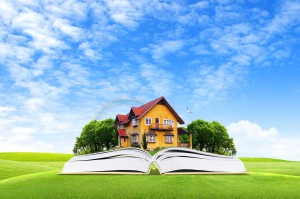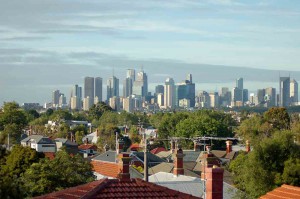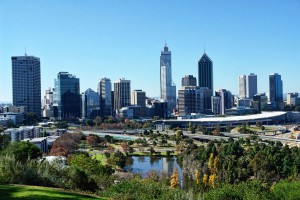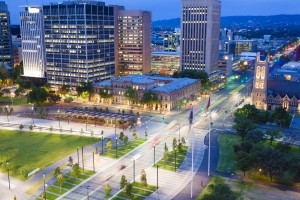There are more interesting articles, commentaries and analyst reports on the Web every week than anyone could read in a month.
Each Saturday morning I like to share some of the ones I’ve read during the week.
The weekend will be over before you know it, so enjoy some weekend reading…and please forward to your friends by clicking the social link buttons.
Almost two-thirds of Australians see home ownership as something for the wealthy, survey finds
We’ve all seen the headlines regarding the property market – but how often have you also heard the phrase “that’s just the media”.
This begs the question – what do everyday Aussies really think when it comes to property?
An article on Domain.com.au has documented the results of a survey – and the results may be surprising.
The great divide between home owners and property “have-nots” is widening fast, according to new research commissioned by the publicly listed mortgage broking firm Mortgage Choice.
More than 60 per cent of Australians believe only the wealthy can achieve the “Great Australian Dream” of home ownership, the data reveals.
Mortgage Choice and CoreData’s Evolving Great Australian Dream study found 63.2 per cent of Australians said “only people with a lot of money can hope to achieve the Australian Dream”.
Mortgage Choice chief executive John Flavell said the finding was unsurprising considering that property prices were growing faster than wages.
“According to the Australian Bureau of Statistics’ Wage Price Index, wages grew 12.6 per cent between March 2012 and March 2017,” he said.
Australian Bureau of Statistics data shows that the home ownership rate in Australia decreased to 67 per cent in 2011 from 68.9 percent in 2006.
The national home ownership rate averaged 69.2 percent from 1966 until 2011, reaching an all-time high of 71.4 per cent in 1966 and a record low of 67 per cent in 2011.
Victoria’s home ownership is now at a historic low, with just 66 per cent of households owner-occupied, compared to almost 74 per cent in 2001.
Victoria is placed behind South Australia and Western Australia, but is still ahead of NSW and Queensland, on the home ownership front.
Although it is becoming increasingly difficult for some buyers to get their foot on the property ladder, Mr Flavell said the research demonstrated that property ownership remained the Great Australian Dream.
“Regardless of how difficult property ownership becomes, people still want to own a home.
In fact, our research shows people rate ‘home ownership’ as more of a priority than career success, travel, or having a luxurious lifestyle,” he said.
Read the full article here
Job vacancies rise to a 5-year high
It seems that our unemployment rate is at an all time low.
This Blog by Pete Wargent shows the statistics behind the results.
There has been much criticism of the Reserve Bank’s apparently lackadaisical approach to monetary policy and the subdued economy in recent times – mainly from people like me, to be fair.
But the RBA must be feeling at least a little vindicated after a spate of improved news about the economy, particularly on the employment front.
The unemployment rate was reported at a 51-month low this month.
And so it continues today.
It was reported today that manufacturing employment has expanded by 40,000 over the past year, the strongest growth in a decade.
And the jobs outlook has brightened lately too.
The Department of Employment’s job vacancies index was released today, with total seasonally adjusted vacancies rising to 172,403.
That’s the highest result monthly since nearly five years ago June 2012.
Since the nadir in September 2013, the index has bounced back by 24.5 per cent.
Read the full article here
The 12 Sydney suburbs where the median house price is $7 million
It may be one of the most stunning cities in the world – but with that comes a hefty price-tag.
This article from Finance.nine.com.au looks into Sydney’s 12 most prestigious suburbs that hold a median price of $7 million.
The real question is….who can afford to live here?
It’s the bubble within the bubble: a new report from property valuer Savills has identified the 12 Sydney suburbs where the median house price is a staggering $7 million.
Home to Sydney’s social and financial elite, all of the suburbs named in the index contain the same features of sweeping harbour views, private seaside docks and easy access to the CBD.
Categorised as Sydney’s “luxury market”, the 12 suburbs include Darling Point, Vaucluse, Elizabeth Bay, Woollahra, Dover Heights, Rose Bay, Paddington, Potts Point, Bellevue Hill, Point Piper and Watsons Bay.
n these select suburbs, luxury homes have seen a comparably modest price growth of 8 percent a year – compared to the shockingly high annual rate of 18 percent found across the city.
According to Savills head of research Sophie Chick, buying inside the luxury bubble means you’re paying a cool $6.2 million more than anyone else.
“The median price of properties in the luxury index is over $7 million compared to $795,000 across the wider Sydney market.
This price point is accessible to a much wider pool of buyers than the luxury market, particularly investors who have been active in Sydney,” Ms Chick told The Financial Review.
“Across the luxury market in the eastern suburbs the average price per square meter (internal and external) is $16,600.
For a property on the waterfront, that increases to $24,800, a 50 percent premium.”
While the majority of buyers come from professions you’d expect to live in the luxury enclave – such as bankers, doctors and lawyers – Savills Price Index also showed there was a resurgence in young professionals from tech backgrounds buying luxury housing.
Click here for the full article
How many coffees can buy you a house?
Unless you’ve been living under a rock you will no doubt be familiar with the debate that seems to have no end – ‘The cafe generation’ vs. ‘The critics’.
So if you’ve been feeling guilty or uneasy about getting your coffee fix from your favorite local cafe, with the illusion that you could otherwise be buying a house, here’s a little reality check.
Results in an article on Beanhunter.com look into the median price of each state – and just how many coffees it would take to reach it.
There are certain things Australians seem to love arguing about, and housing is one of them.
Prices in the major capital cities aren’t slowing down, and more young people are simply giving up hope at the idea of ever owning a solid piece of land or property.
That fear was exacerbated to the extreme in the past several weeks, when property investor Tim Gurner said that Generation Y should stop going out for “smashed avocado and $4 coffees” in order to afford a house.
Hold up…coffee?
That’s where we come in.
Now, we know that property is extraordinarily expensive, but is saving your coffee money every day really going to help?
We don’t need to argue about this – we actually have the data.
So we’ve broken down each state and figured out just how many coffees you’ll need to save before you can actually get your foot in the property market.
Heads up: it won’t happen very quickly.
To conduct this little experiment, we’ve taken Tim Gurner at his word.
We’ve assumed that a coffee costs $4 around the country, and we’re not adjusting for living expenses here.
For each city, we’ve taken the latest median price from Domain’s “State of the Market” report, last released in April 2017.
With that in mind, let’s take a look at how long it would take a resident in each city to save for a house if they gave up their $4 coffee every day.
Sydney
Median house price: $1,151,000 For a 20% deposit, Sydney siders would need to give up 57,550 coffees that cost $4 each.
That’s 157 years of worth of coffees.
Melbourne
Median house price: $843,000
For those living in Melbourne, a 20% deposit of $168,000 would require giving up 42,150 coffees.
That’s only 115 years of coffee – a steal when compared to Sydney! (Except not really.)
Brisbane
Median house price: $532,000 It gets a little easier up north. A 20% deposit of $106,000 will only require 26,600 coffees, which is 72 years worth of savings.
Darwin Median house price: $598,000 Who knew Darwin prices would be more expensive than Brisbane?
At this rate, a 20% deposit of $119,000 will take you 29,900 coffees, or 81 years worth of saving.
Perth
Median house price: $561,000 Perth has taken a little bit of a hit on its property prices recently as the mining boom winds down.
A 20% deposit here will take you $112,000, or 28,000 coffees and 76 years worth of savings.
Hobart
Median house price: $389,000 Finally, some relief at last!
Hobart’s modest prices will take you just $77,000 for a deposit, or 19,450 coffees – that’s just 53 years worth!
Adelaide
Median house price: $514,000 Down by the bay a house deposit will cost you $102,000, which is 25,700 coffees worth over 70 years.
Canberra
Median house price: $705,000 Prices rise again in Canberra.
A 20% deposit will set you back $141,000, which is 35,250 coffees – which will take you 96 years to save.
Read the full article here
This is why Melbourne is becoming a better international city than Sydney
The battle between Sydney & Melbourne has been around for as long as anyone can remember.
But when it comes to international ranking – who takes the lead?
According to this article on Business Insider Melbourne continues to shine – find out why.
Melbourne and Sydney have both been rated as global elite cities in A.T. Kearney’s Global Cities 2017 report.
The report’s Index ranks the world’s most influential cities and, in an Outlook report, those likely to become more important on the global stage.
Melbourne is on the move and is rising faster on the global rankings than Sydney.
The Victorian state capital jumped nine places to rank sixth in this year’s Outlook, the highest ranking the city has achieved since the Outlook launched three years ago and well ahead of Sydney at 13th.
The Outlook ranks cities in terms of their future potential, scoring on metrics across four key areas: personal well-being, economics, innovation and governance.
Here are the global city outlook rankings:
Source: A.T. Kearney’s
Melbourne’s jump came on the back of improvements in infrastructure and private investments, which bode well for sustainable long-term growth of the city.
It also took the global top spot for personal well-being, especially in the area of environmental performance.
Melbourne was also ranked 15th in the Index, holding on to its 2016 position.
The Index ranks cities based on current performance on metrics across five critical dimensions: business activity, human capital, information exchange, cultural experience and political engagement.
Click here for the full article














No comments:
Post a Comment